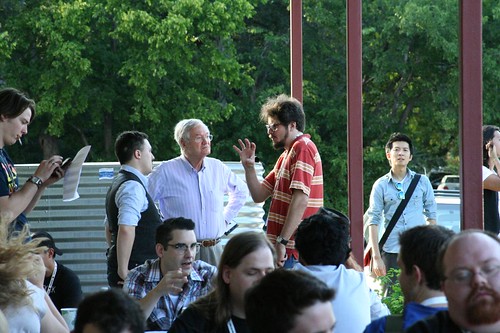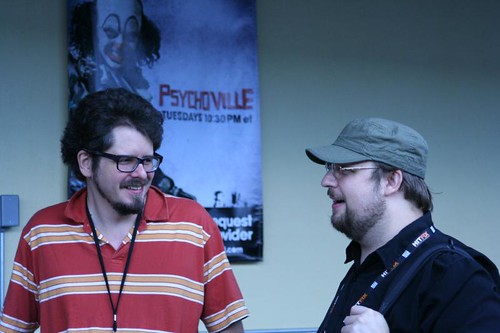Mike Saulters's blog
Review: Jack the Giant Slayer
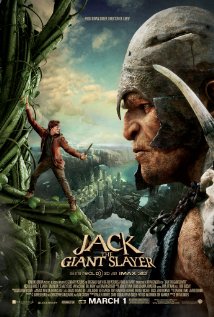
Nicholas Hoult, still on screens with the lukewarm Warm Bodies, returns in this week's slightly warmer Jack the Giant Slayer, directed by Bryan Singer. Written by Darren Lemke (Shrek Forever After), Christopher McQuarrie (The Usual Suspects, which Singer also directed) and Dan Studney, the movie is an enjoyable but largely forgettable reimagining of "Jack and the Beanstalk."
I don't want to appear too negative, as I did enjoy most of the film's 114-minute run time, but nothing here was as impressive as what ABC has already given us in the TV series Once Upon a Time. Hoult does justice to a role that is perhaps not worthy of his talents, joined by Ewan McGregor, Stanley Tucci and Ian McShane all playing to their individual strengths. (I confess it was difficult not to imagine McShane loosing a storm of profanity once or twice, but this is a family film.) The effects are well executed though again unmemorable, and Singer is no slouch at directing, so my problem lies squarely with the story.
In a time when, with few exceptions, strong female characters are disappearing from Hollywood, this reimagining strikes a particularly anti-feminist tone. Jack the Giant Slayer features a princess, Isabelle (Eleanor Tomlinson) who craves adventure, bored as she is with her palace surroundings. Normally escorted by guards wherever she goes, Isabelle sneaks away during the night and immediately finds her way into danger, requiring the help of her father's best men and one farm boy to rescue her. At no point during the subsequent "adventure" does she do any adventuring or even attempt to effect her escape.
There's also the matter of an evil advisor to the king (Stanley Tucci), whom Isabell will be forced to marry against her wishes. The writers go full-Disney, making sure the princess' mother is dead and even rewriting the tale so Jack's mother is replaced by a grumpy uncle (who last appears as Jack and Company begin to climb the beanstalk, and never resurfaces).
Although Jack the Giant Slayer is presented in 3D, that's of little importance, as it isn't used to any great effect -- unfortunately for a film about giants, where it could have created an exagerrated perspective to highlight the difference in size. The best things about the film are Hoult and Ewan McGregor, though the vibe between them mimics the relationship between McGregor and Hayden Christensen's characters in Star Wars Episode II.
Happier News: Lars Nilsen to Program New AFS Venue
I reported last week on the imminent departure of Alamo Drafthouse programmer Lars Nilsen, an event that drove many to reminisce and memorialize as if it were the death of a dear family member. All is well, however, as yesterday the Austin Film Society announced that Nilsen will be joining the organization as Film Programmer. "At AFS, Lars will curate repertory series in addition to midnight movies, new releases, independent films and classics," the press release read.
These new AFS series will take place at The Marchesa Hall & Theatre -- which longtime Austinites will remember is in the old Lincoln Theatre location near Highland Mall, and new Austinites might know as the Blue Genie venue. AFS has a new partnership with the theater, which will have a new Dolby sound system and 35mm changeover projection for "AFS Cinematheque at the Marchesa" programs. Lars is joining Chale Nafus and Ryan Long on the AFS programming team, headed up by Associate Artistic Director Holly Herrick.
Review: John Dies at the End
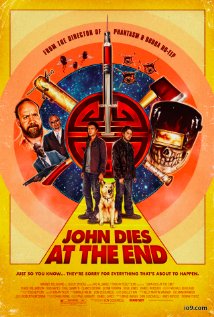
Don Coscarelli has two successful cult franchises to his name in Phantasm and Beastmaster. The announcement of Bubba Nosferatu, sequel to 2002's Bubba Ho-Tep, makes that three ... so why not go for a fourth? The writer/director purchased rights to John Dies at the End, itself a cult web serial by author David Wong, first released online in 2001. The resulting film, opening Friday at Alamo Drafthouse on Slaughter, is arguably the best work Coscarelli's ever done.
Coscarelli's screenplay is smart, fast-paced and exciting, full of razor-sharp wit delivered first-person by star Chase Williamson. The story incorporates many important elements from the book while changing various details, sometimes for practical reasons. (Fans of the book will note the name and sex of the dog Molly have changed.)
A worthy modern-day successor to Ghostbusters, the movie John Dies at the End follows Dave and his friend John (Rob Mayes), paranormal investigators who derive their powers from the use of a mysterious otherworldly substance they call "soy sauce."
When under the influence of "the sauce," they experience various strange effects including telepathy, precognition and others for which there is no proper name. Forces beyond their control pull them into a battle to save the world. They're assisted by the alien Roger North (Doug Jones) and psychic superstar Dr. Albert Marconi (Clancy Brown). Paul Giamatti rounds out the fantastic cast as the reporter Arnie Blondestone.
Coscarelli's team does superb work with practical effects, rivalling much larger budget films and giving John Dies at the End a timeless quality akin to the original Evil Dead. People who have read the source book already know, as people are discovering through the movie, that John Dies at the End is a cult superstar in the making with a rich mythology drawn from diverse supernatural cultures, lovable characters, and a time-twisting plot that never rests. The movie is highly recommended for people who like to have fun at the cinema.
Sad News: Lars Nilsen Leaving Drafthouse Programming Post
News that Lars Nilsen (pictured at top on left) is leaving his programmer position at Alamo Drafthouse was released today by Alamo Drafthouse. The news comes as no surprise to those closely familiar with the Drafthouse programming team, but it is still unwelcome news. Few businesses have a relationship so strong between their employees and customers as Alamo Drafthouse can boast, one that can truly be called a family. And in the case of Lars Nilsen, that relationship goes back to the earliest days at 4th and Colorado.
Coming on top of last week's departure of programmer Zack Carlson, this represents a major transition in the Drafthouse family with as-yet unknown effects. Zack and Lars were not just silent, behind-the-scenes programmers. Together, they have been the most public-facing representatives of the Drafthouse on a daily basis, and creators of feature programs like Weird Wednesday and Terror Tuesdays.
With any family, the kids eventually grow up and head to college and start their own careers and families. As these gentlemen move on to bigger and better things in their careers, the effect of their time here will continue to be felt even as new faces appear to make their own marks.
Review: Identity Thief
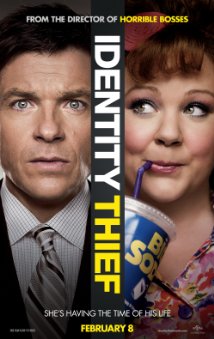 Actress-comedian Melissa McCarthy is a hot property in Hollywood since her breakout performance in the 2011 movie Bridesmaids. She's got an ongoing co-starring role on the TV series Mike & Molly and a part in This is 40 added to her list of credits, along with an upcoming police comedy with Sandra Bullock (The Heat), and a rumored appearance in The Hangover Part III.
Actress-comedian Melissa McCarthy is a hot property in Hollywood since her breakout performance in the 2011 movie Bridesmaids. She's got an ongoing co-starring role on the TV series Mike & Molly and a part in This is 40 added to her list of credits, along with an upcoming police comedy with Sandra Bullock (The Heat), and a rumored appearance in The Hangover Part III.
McCarthy's over-the-top vulgar antics are a huge box-office draw right now, and the producers of Identity Thief are banking on that, showing previews filled with her most outrageous moments in the film. The film is scripted by Craig Mazin, whose experience writing outrageous humor includes The Hangover Part II and a couple of the Scary Movie outings, and directed by Seth Gordon, who did similar work in Horrible Bosses. (Remember when he was The King of Kong filmmaker?)
The road-trip comedy co-stars Jason Bateman as the victim of her character Diana's criminal madness, out to deliver her to justice and reclaim his life. Though it delivers plenty of insanity, the laughs grow thinner as outrageous comedy gives way to touchy-feely tugs on the heartstrings, concluding with an ending straight out of an ABC Afterschool Special.
Identity Thief is a generally enjoyable film, and would have been more so, if I could have looked beyond a couple of weaknesses. The first was a painfully awkward cameo scene with Jon Favreau, which seems like it was filmed only to prove that Favreau needs to stay behind the camera. The second was a clunky story that brings characters in, makes them important and then fails to resolve their story arcs. Even when I take my critic hat off, these two problems remain.
Inexplicably, Identity Thief earned an R rating, apparently entirely on the basis of "adult situations." The movie contained mild gun violence, almost zero nudity (a single shot of male buttocks) and even very little rough language. It felt entirely PG-13 and with only small alterations, could easily air on network television.
Review: Warm Bodies
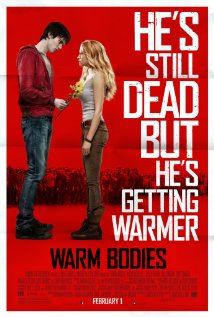
From the director of 50/50 and All the Boys Love Mandy Lane, Warm Bodies is not that hot. Director Jonathan Levine has adapted Isaac Marion's unique zombie love story into a predictably safe PG-13 screenplay.
There are a couple of well-established formulas for zombie movies that people expect to see. First and perhaps most prevalent is the survival story that pits a random group of people against an inevitable horde of the undead, trapped in a shopping mall or on an island, usually killing them off one by one until they are all gone or perhaps one or two escape.
Next is the post-apocalyptic adventure which focuses on one or two travellers as they make their way through a landscape from which the undead pop up along the way to drive the story forward. Zombieland is one of the best recent examples.
Many films combine elements of both of these stories, and hopefully throw in enough humor to balance the more gruesome mechanical aspects that are often very graphically displayed. Some of them are better than others, but an original approach is important in a subgenre so popular that it has been done to death (no pun intended).
Warm Bodies is the first story I know that is told from the point of view of the zombies, which is a highly novel take, but the structure of the film unfortunately left me hungry for more, and not in a good way. Loosely based on Romeo and Juliet, the story follows "R" (Nicholas Hoult) through his daily zombie routine as he philosophizes on the zombie condition and longs for slightly more lasting and meaningful relationships than the one he has with his zombie best friend "M" (Rob Corddry). On a hunger raid with his cohorts, R encounters Julie (Teresa Palmer) and a group of her friends on a supply run. In the scuffle that follows, R eats the brains of Julie's ex-boyfriend Perry (Dave Franco) and falls in love with her. What follows is a story of forbidden love that brings to mind Beauty and the Beast.
Mike's Alamo Memories: 'Lamar est mort. Vive Lamar!'
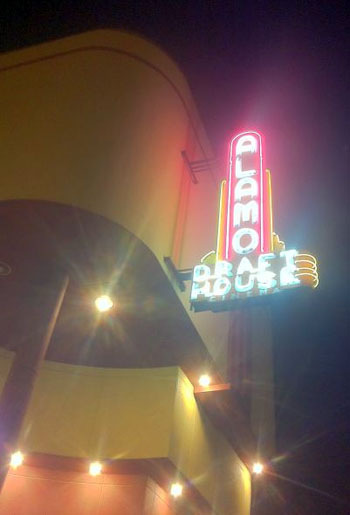 This month, our community collectively said goodbye for a while to the flagship Alamo Drafthouse location and home of press screenings, special events, festivals like SXSW and aGLIFF Polari, and the two most dear in my heart: Butt-Numb-a-Thon and Fantastic Fest.
This month, our community collectively said goodbye for a while to the flagship Alamo Drafthouse location and home of press screenings, special events, festivals like SXSW and aGLIFF Polari, and the two most dear in my heart: Butt-Numb-a-Thon and Fantastic Fest.
I have countless memories of this place, beginning with my first screening there eight years ago: Robin Williams in The Big White, the first screening of the first Fantastic Fest in 2005. I've likely seen more movies in this cinemaplex than in all the other theaters I've visited in my life combined. Certainly more than I dare attempt to count, though an average of 30 films each year for Fantastic Fest plus the five 24-hour Butt-Numb-a-Thons would equal roughly 600 hours, or 25 solid days of films watched there before we even started on SXSW, aGLIFF or any of the other shows.
No single word or phrase is sufficient to capture the significance of this place. It's not a mere theater, just a home away from home, or a paltry legend. It's all of the above, and a bag of chips. Tim League turned this former grocery-store location into a dream world, a pocket universe that brought a piece of Hollywood to us in the heart of Texas, sometimes with glitz and glamour and sometimes the Hollywood that sits behind the camera.
This is the place where I've been inches from (and in some cases chatted with, in no particular order) Rick Baker, Phil Tippett, Peter Jackson, Darren Aronofsky, Tim Burton, Roger Corman, Frank Darabont, The Wachowski Starship, McG, Uwe Boll, Don Coscarelli, Scott Derrickson, Adam Green, Joe Lynch, Lucky McKee, Ethan Hawke, Joseph Gordon Levitt, Mel Gibson, Doug Benson, Susan Tyrell, Bill Murray, Paul Rudd, Winona Ryder, Martin Landau, Zack Ward, Richard Kelly, Dominic Monaghan, Kevin McKidd, Josh Hartnett, Jason Momoa, John Gulager, Clu Gulager, Barbara Crampton, Danny McBride, Justin Theroux, Noah Segan, Rian Johnson, Jess Franco, Angela Bettis, Anton Yelchin, Dave Franco, Christopher Mintz-Plasse, Jeff Fahey, Jeffrey Combs, Dolph Lundgren, Karl Urban, Darren Bousman, Bill Pullman and Craig Brewer ... among many many others.
It is the place where we've partied until dawn and then come back for another day of movies and partied til dawn again... for a week... every year... for almost a decade. It is the place where, at one of those parties, the legend of Nacho Vigalondo was born with the introduction of the "swastika dance." It is the place where, at the same party the following year, sometime around 4 am, I saw 15 men pile atop each other beneath a shower of beer foam to the song "It's Raining Men." It is the place where I saw Elijah Wood, aka Frodo Baggins, on hands and knees in the middle of an impromptu live-action Human Centipede re-enactment, making him truly "one who has seen the eye."
Review: Gangster Squad
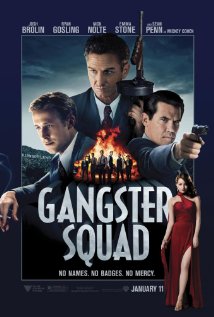
Director Ruben Fleischer is already well known for his hits Zombieland and Thirty Minutes or Less, but his latest movie, Gangster Squad is absolutely nothing like those features. That is to say, the gritty true-crime tale based on Paul Lieberman's seven-part LA Times-published "Tales from the Gangster Squad" series is a full 180 degrees from Fleischer's comedic work. Somewhere in the middle between The Untouchables and Dick Tracy, Gangster Squad is an exceedingly bloody, bloodthirsty historical account of extensively-researched events from the early 20th century.
The film opens with an account of Mickey Cohen (Sean Penn), a mad-dog ex-boxer mob boss who violently disposes of any competitors. Penn plays Cohen so over-the-top it's impossible not to compare him to a Dick Tracy villain brought to life, a role he appears to relish. At times, his performance almost reaches Nicolas Cage levels of crazy.
Counter to this is Josh Brolin in the role he was born to play. The physical resemblance to Dick Tracy is unmistakeable, and Brolin plays Sgt. John O'Mara cool as a cucumber while, with violence equal to Cohen's, he takes down a room full of pimps assaulting a young girl. My favorite lines from the film: "'What happened to you?' 'They resisted arrest.' 'What happened to them?' 'They resisted,'" sums up the character, a war hero who's one of the only cops so honest he refuses all attempts to bribe him.
When word of O'Mara's exploits reaches the chief (Nick Nolte), he tasks the sergeant with forming an unofficial hit squad to clean up the city -- not by directly taking Cohen down, since somebody else would just take his place, but instead by making his criminal efforts unprofitable.
With his wife's guidance, O'Mara recruits a team including among others Gunslinger Max Kennard (Robert Patrick), radio man Conway Keeler (Giovanni Ribisi), and his close friend Sgt. Jerry Wooters (Ryan Gosling). What follows is an account of their exploits as they stumble through one bloody encounter after another. The story is straight-forward with little imagination in the plot, but the presentation is effective. Fleischer deserves credit for a beautiful recreation of 1940s LA which compares favorably to that of LA Confidential and hits practically every well-known location.
Review: Les Misérables
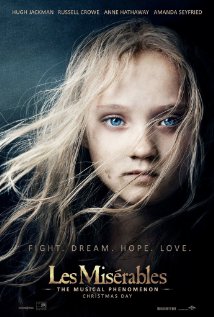 A giant beautiful flawed mess is the best description I can give for the Tom Hooper-directed big-screen adaptation of Les Misérables, itself a musical theater adaptation of the 1862 Victor Hugo novel. The story is a sweeping epic, and people unfamiliar with the material may find they are swept off their feet by the spectacle. But for longtime fans of the musical, the movie is a bumpy ride more full of downs than ups.
A giant beautiful flawed mess is the best description I can give for the Tom Hooper-directed big-screen adaptation of Les Misérables, itself a musical theater adaptation of the 1862 Victor Hugo novel. The story is a sweeping epic, and people unfamiliar with the material may find they are swept off their feet by the spectacle. But for longtime fans of the musical, the movie is a bumpy ride more full of downs than ups.
Hugh Jackman takes on the lead role of Jean Valjean, a convict released after 19 years imprisonment for the loaf of bread he stole to feed his sister's starving child. The film opens with a stunning shot of hundreds of prisoners, Valjean among them, struggling with lines to pull a ship into dock. This is one of the strongest images Hooper presents us and a dazzling introduction to Valjean's world. As he is released, Valjean is confronted by Russell Crowe's Javert, who presents him with his release papers, and we begin to see the largest of my problems with Hooper's take.
The characters throughout Les Misérables break out of song into speaking their lines, unlike in the stage musical. Verses that were written to carry enormous emotional weight through their melodic lines are instead spoken, as the actors attempt to express those emotions as if they were acting in a non-musical work. Some characters with only a line or two never actually sing. Jackman and Crowe are accomplished singers, but they don't have the appropriate range for these roles, and are forced to sing many lines an octave lower, virtually killing their impact.
Anne Hathaway's role as the tragic Fantine is perhaps the most dramatic performance, as we see her fall into disgrace and eventually death trying to care for her daughter Cosette. As with Jackman and Crowe, Hathaway's vocal performance takes a backseat to her acting, but that acting is so outstanding that she has become a strong contender for an Oscar.
Review: The Hobbit: An Unexpected Journey
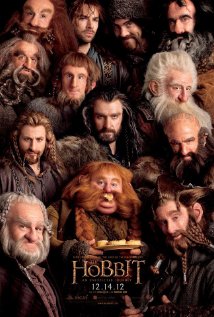 Nine years have now passed since the last entry in Peter Jackson's The Lord of the Rings trilogy, The Return of the King, was released. The series was so wildly successful it seemed obvious that J.R.R. Tolkien's prequel to the series, The Hobbit, would receive the Jackson treatment, but scheduling and rights issues among many other problems almost put an end to the production repeatedly.
Nine years have now passed since the last entry in Peter Jackson's The Lord of the Rings trilogy, The Return of the King, was released. The series was so wildly successful it seemed obvious that J.R.R. Tolkien's prequel to the series, The Hobbit, would receive the Jackson treatment, but scheduling and rights issues among many other problems almost put an end to the production repeatedly.
Now here we are with The Hobbit: An Unexpected Journey -- the first in a trilogy that brings to life the original tale, Tolkien's first book of Middle-earth, not only in 3D but in the new high frame-rate (HFR) 48 frames-per-second presentation.
Though only 5% of movie theaters will be outfitted and presenting in HFR, no review can fail to mention this gimmick. Some people view it as perfectly lifelike. Another camp sees it as the end of cinema. Based on my own experience watching the film, the technology has potential, but it practically will require more practice to perfect the art. Like an artist used to working in oils who suddenly finds himself using Photoshop, new skills are needed, and this feels like an experiment not quite perfected.
I won't go into specifics on the problems I saw with HFR. You can watch in either or both formats and decide for yourself. Unfortunately, there are other problems with The Hobbit: An Unexpected Journey that can't be solved as simply as choosing which theater to watch it in.
Foremost, the majority of the film suffers from an excess of campiness or silliness. The source novel is more light-hearted in tone than the trilogy, but time and again the line is crossed beyond light-hearted to feeling as if Jackson took a cue from George Lucas' handling of Episode I: The Phantom Menace and made a film for much younger audiences. There are some pacing issues, especially at the beginning, but the tone is the most negative factor.


